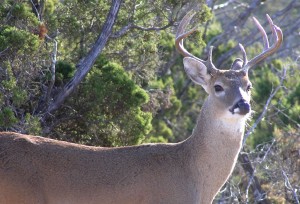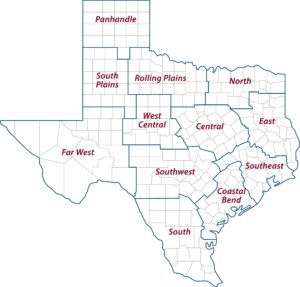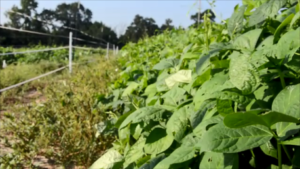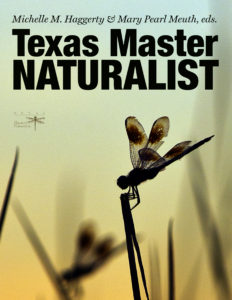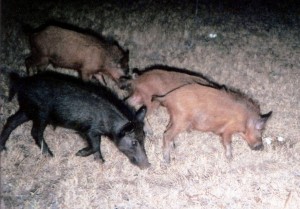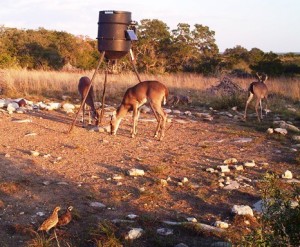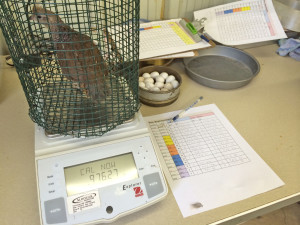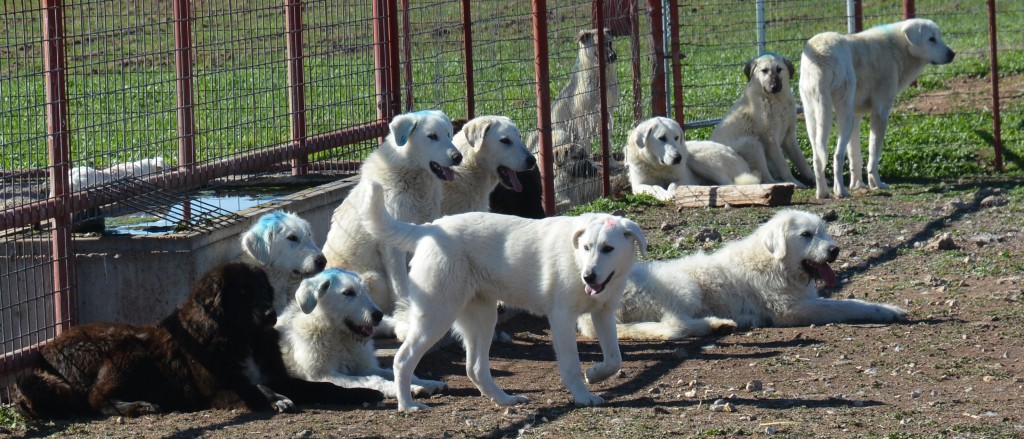Writer: Steve Byrns, 325-653-4576, s-byrns@tamu.edu
Contact: Dr. John Tomecek, 325-650-3520, john.tomecek@ag.tamu.edu
Dr. Cat Barr, 979-845-3414, acbarr@tvmdl.tamu.edu
THRALL – Concerns over corn tainted with Fusarium fungi, which can produce Fumonisin, continue to flow into Texas A&M AgriLife Extension Service specialists’ offices, but with the main deer hunting season only days away, the calls are increasingly from concerned hunters feeding corn to deer and less from corn producers, said agency experts.
“Shelled corn is the traditional ‘go-to feed’ in Texas for deer, so it’s understandable there would be concerns considering how much of it is fed to wildlife,” said Dr. John Tomecek, AgriLife Extension wildlife specialist at Thrall, who also serves West Texas.
Worries over tainted corn have experts fielding questions as hunting season arrives. Wild turkey gather under a feeder full of corn in this typical West Texas scene. (Texas A&M AgriLife Extension Service photo by Steve Byrns)
Tomecek said it’s best for hunters to be aware of the problem and know what they are buying, but not to be overly concerned.
“I think what is important to remember when we feed corn to free ranging deer, is chances are we aren’t providing much more than a treat to these animals in the greater scheme of their diets,” Tomecek said. “Granted, corn helps provide energy during cooler months and is a great bait for hunting success, but it really doesn’t make up a high percentage of most deer diets.”
Dr. Cat Barr, veterinary toxicologist with the Texas A&M Veterinary Medical Diagnostic Laboratory at College Station, had similar thoughts.
She said the upper limit for deer feeding on Fumonisin-tainted corn should be no more than 30 parts per million and should be no more than half their diet. These rates are limits set for confined breeding cattle, a scenario not likely to occur in free-ranging deer.
“Even if the corn kernels themselves are nearing the recommended toxin ceiling, the deer are diluting it with all the greenery they’re eating as well,” she said.
Tomecek said the excellent growing conditions most of the state has enjoyed this year resulting in this greenery is another strong reason for lesser concern. Aside from its diluting effect, the lush growth tends to limit corn-feeder visits by wildlife.
As far as a human health threat from consuming Fumonisin-eating game, Barr said studies of ducks, turkeys and pigs showed no measurable Fumonisin B1 levels in muscle tissues when animals were fed up to 20 ppm at 50 percent of the diet, a level unlikely to occur in free-ranging animals during favorable growing conditions.
“As for the effects on game birds, we know these kinds of toxins can have serious adverse effects on birds in general,” Tomecek said. “But again, unlike a domestic poultry production scenario where the birds are confined, wild birds — be they game birds or those frequenting a backyard feeder — are using the corn as only a part of their diet, although perhaps at a higher proportion than do deer.
“A concerned hunter can always examine the crops of birds harvested to determine how much of their diet is coming from the corn, but most will find there is a great variety in diets of wild birds.”
Fumonsin toxin is produced when certain Fusarium fungi are present on corn, a condition exacerbated by moisture during seed development, Tomecek said.
“The good news about Fumonisin is that Fusarium molds don’t grow in storage, the way Aflatoxin-producing molds can, “ Barr said, “so at least the amount of Fumonisin in the corn is not going to increase, regardless of changes in temperature or moisture. Just keep in mind that some corn may contain both mold types.”
“An Aflatoxin problem can increase inside metal feeders where corn heats and cools at a different rate than the outside air, so condensation forms inside,” Tomecek said. “We see this pretty frequently any time of year where dew or condensation forms on vehicles and such things as metal fence posts and uninsulated tin roofs. Typically, this problem is minor, especially in mostly dry West Texas, but when it does occur clots of dust from corn or other feeds may form and toxins can grow in this environment.
“I recommend cleaning feeders before and after the hunting season, or when it’s convenient at some point during the year. Letting them run low or out, then refilling them with tested corn devoid of toxins should keep your animals coming, while keeping the feed and your investment in that feed, protected.”
Tomecek said corn shouldn’t be feared and is an excellent and cost-effective feed for wildlife, but he does recommend knowing the product and how it should be handled.
“I don’t think folks should shift away from corn entirely,” he said. “But these outbreaks are good reminders to hunters of the importance of proper feed and feeder management; namely to buy quality corn and ask your supplier if they have test results. Ask when the corn was tested and how it has been stored since that date.”
Tomecek said not all corn storage is created equal, especially in productive years, as the grain may have been left outside and is of lower quality, hence lower in price.
“The main take-home points are to purchase a quality product, store it in dry containers and clean your feeders. Do these things and you’ll have no worries.”
-30-

